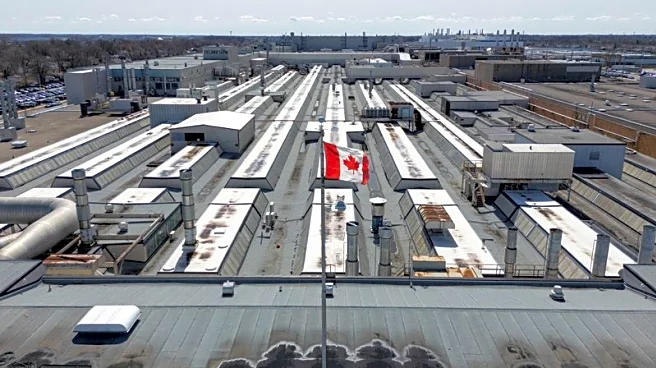What's Happening?
The White House is preparing to ease tariffs on the US auto industry, a decision that represents a significant victory for car manufacturers who have been lobbying to mitigate the impact of high import
duties. The Commerce Department is expected to announce a five-year extension of an arrangement that allows automakers to reduce tariffs on imported car parts. This provision was initially set to expire after two years. The announcement, which could be made as soon as Friday, will be detailed in government documents that also formalize tariffs on imported trucks. This move follows extensive lobbying by major carmakers, including Ford Motor Co. and General Motors Co., who have been seeking relief from tariffs imposed by President Trump on imported vehicles, parts, and materials such as steel and aluminum.
Why It's Important?
The easing of tariffs is crucial for the US auto industry, which has been facing increased costs due to the levies imposed by President Trump. Automakers like Ford and GM have argued that these tariffs put them at a disadvantage compared to foreign competitors, particularly those from Japan, which benefit from lower labor and currency costs. The tariff relief could help US car manufacturers reduce production costs and improve their competitive position in the global market. This decision is likely to have a positive impact on the stock prices of major US automakers, as evidenced by the recent rise in GM shares following the news.
What's Next?
The formal announcement of the tariff relief is anticipated soon, potentially as early as Friday. Automakers will be closely monitoring the details of the policy implementation, particularly the specifics of the tariff reductions and any conditions attached. The industry may also see further lobbying efforts to secure additional concessions or adjustments to trade agreements that affect automotive imports and exports. Stakeholders, including industry leaders and trade associations, are expected to react to the announcement and assess its implications for future trade negotiations and domestic manufacturing strategies.













